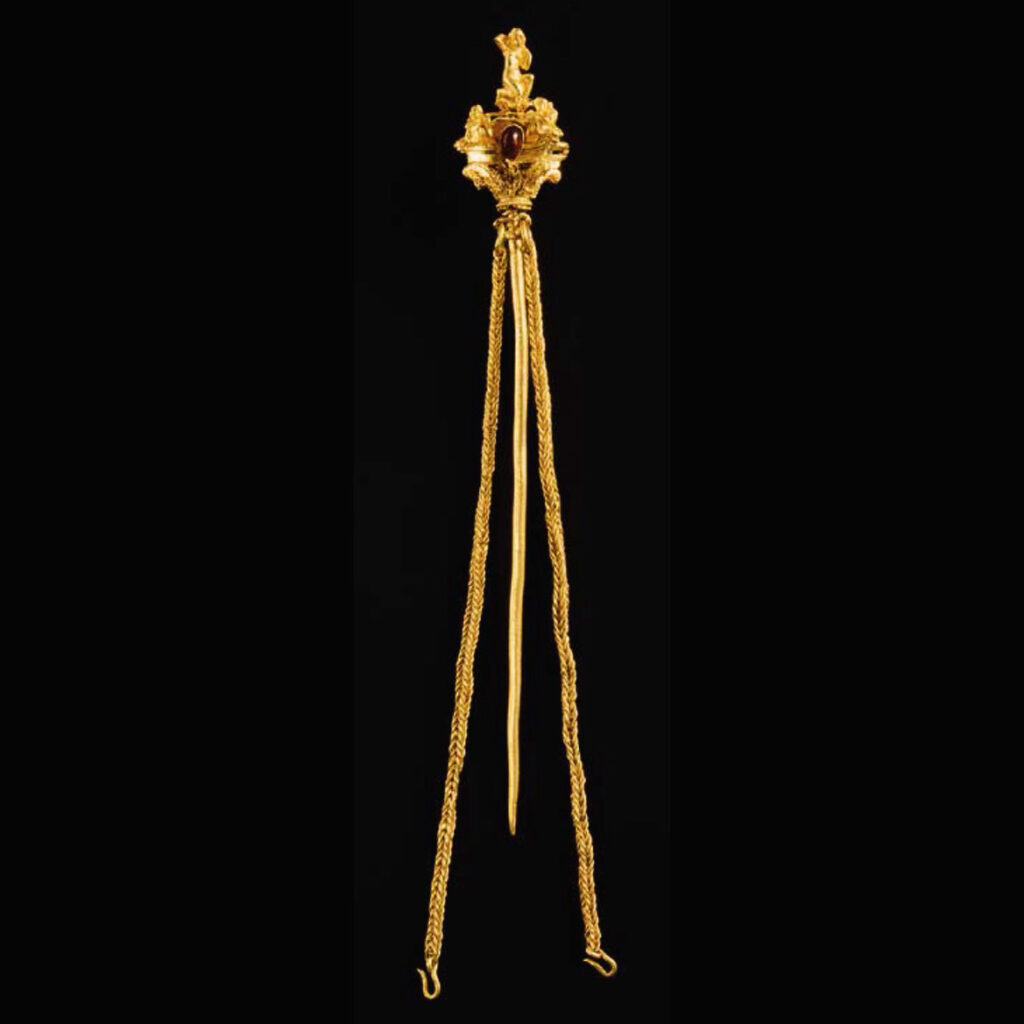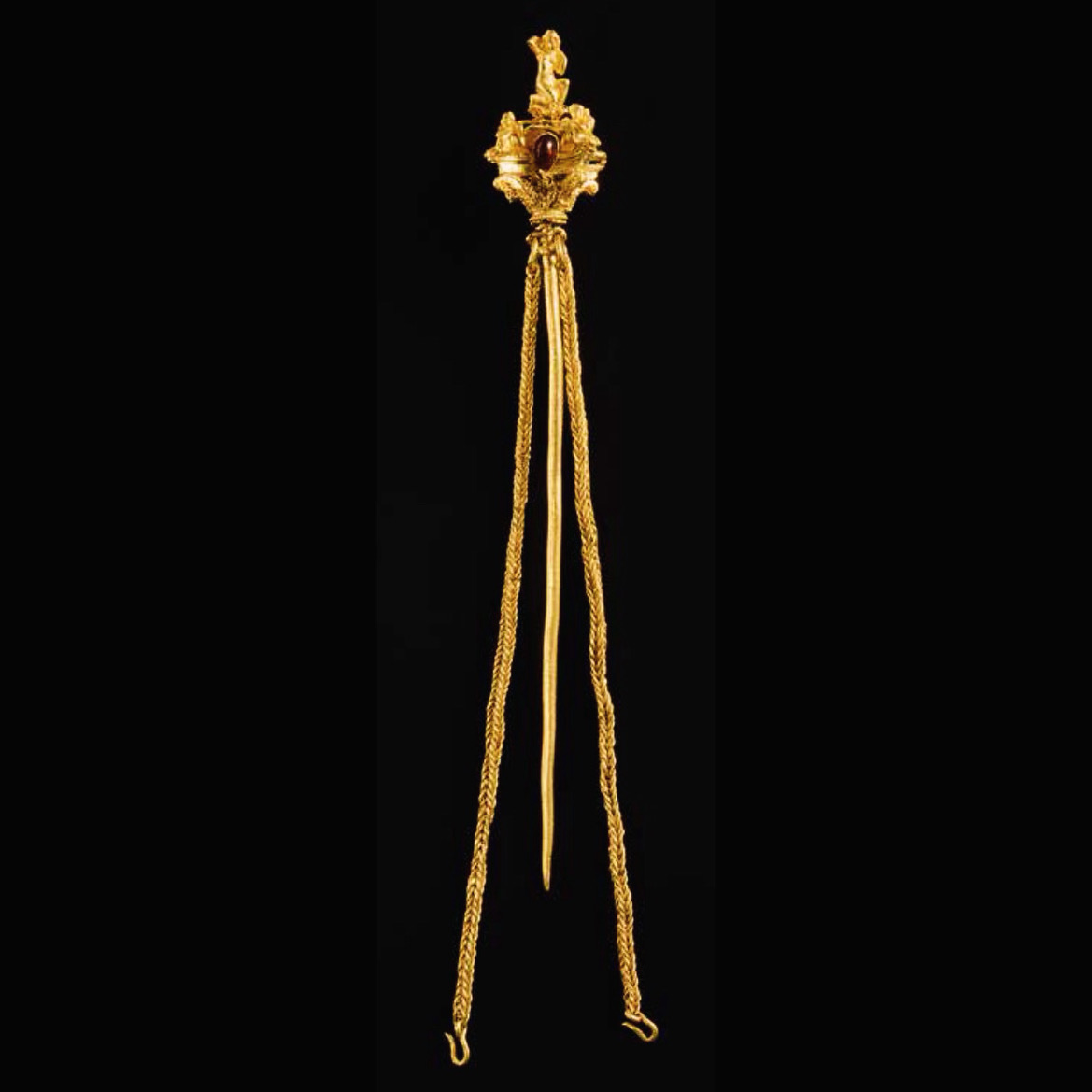Straight pins (this is an especially sumptuous Hellenistic example) were functional (primarily for securing swathes of cloth: think the feminine peplos) and frequently very beautiful. But when ogling them a few Greek vignettes highlighting their dangerous stabbing potential inevitably creep into my mind…
Herodotus recounts a typical spat between city-states during which the Athenians launched a misguided military expedition against the Aeginitans. Only one man lived to return to Athens and was greeted by his comrade’s irate widows, who set upon him with their dress pins and eventually stabbed him to death. (The episode is given as the reason female fashion rapidly transitioned from the pinned peplos to the button-sleeved and presumably safer chiton…)

The great tragedians enjoyed the misuse of feminine pins too. Sophocles has Oedipus on the worst day of his life pluck the pin securing dead Jocasta’s garment and plunge it into the orb of each eye. And in Hecuba Euripides has a gang of vengeful women hold Polymestor down and stab his eyes out with their dress pins. Gory, eh?
The humble pin became (in the male imagination) a stealthy weapon, perhaps revealing a deep-seated anxiety that their cunning and unpredictable women might turn on them with all the pointy tools at their disposal. This one shows nude Aphrodite (a goddess fully capable of homicidal pin stabbing I imagine) crouched on a capital and putting up her hair while gazing at herself in a box mirror. A dangerous beauty indeed…




